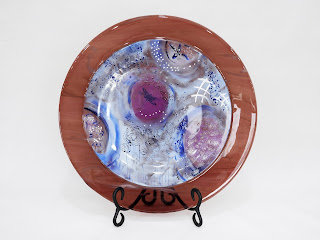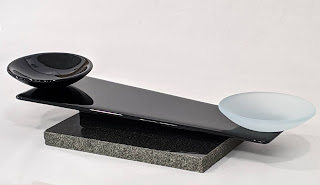Studio Tip: Using Stamps to Apply Enamels to Glass
When working with enamels, one of the biggest considerations is overcoming surface tension. A good example of surface tension is the tendency of water to bead up when dripped on a flat, smooth surface. If you have worked with enamels on glass, you'll know that you can't just brush enamels onto glass like oil or acrylic paints onto canvas because the enamels will tend to bead up and separate due to surface tension. The effects of surface tension are particularly relevant when applying enamels with stamps. Add to this the fact that stamps are often designed with thin lines, and they can be challenging to use.
There are some ways, however, to work with glass enamels successfully by using techniques to help overcome surface tension.
- If the glass surface is smooth, make sure you are applying ample enamel. Pool the enamel and use a brush to push and pull it into place. As mentioned before, sweeping a brush across the glass will cause the enamels to separate.
- Rough up the glass surface. Some people refer to this as giving the glass "tooth". This can be accomplished in a few ways. The glass surface can be sandblasted, etched with a cream made for etching glass, or abraded with sand paper or diamond hand pads. You can also apply a thin layer of fine clear powder to the glass and fire to a temperature where the powder adheres to the glass but does not fully fuse so that the surface remains textured.
- Apply the wet enamel over the top of dry enamel. The dry enamel provides the "tooth" as mentioned above. This usually works very well when using stamps. Keep in mind that some enamels may be reactive, just like reactive colors in sheet glass or frit.
- Use thicker enamels. The more viscous the enamel, the less likely it will be to bead up. I like Color Line enamels that come in a paste form for screen printing when working with stamps. Color Line's regular enamels work reasonably well for stamping. If you are using enamels that are not pre-mixed, mix them somewhat thickly.
I hope you've found this information on working with enamels helpful!
Dana



